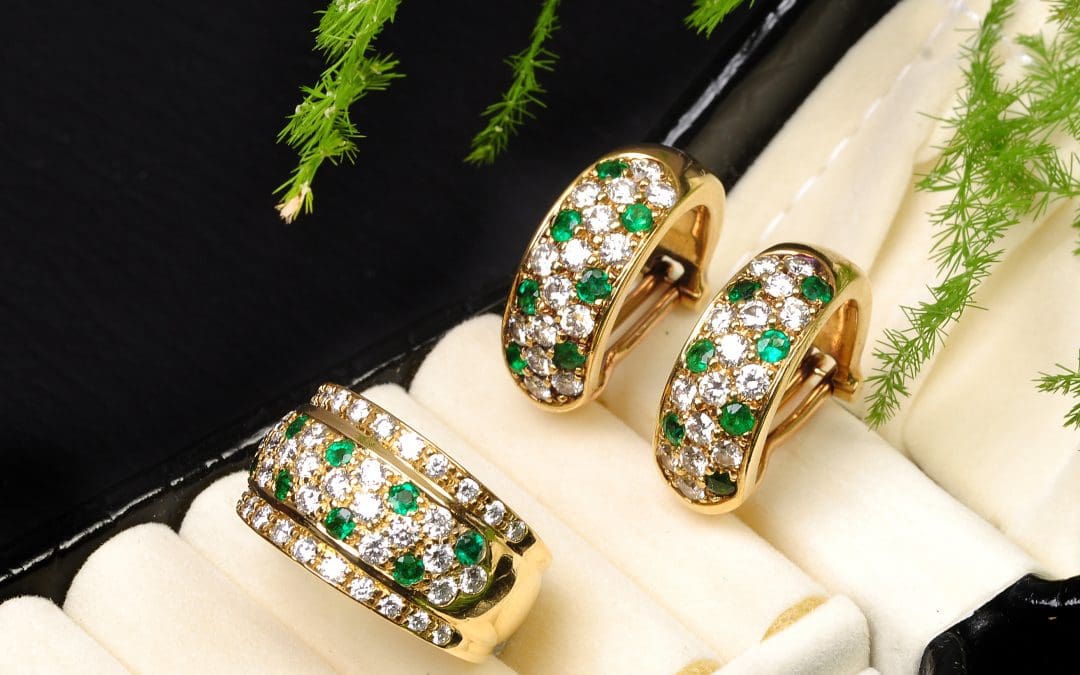Jewellery has been a popular form of adornment throughout history, with remnants made from materials like shells, bones, and bones recovered from as far back as prehistoric times. Of course, while we would love to cover the entire history of fine jewellery, it’s impossible to fit it all into one short article. For now, we’ll be focusing on a brief British guide to jewellery wearing from the Medieval period onwards.
Medieval jewellery
The jewellery worn in Medieval Europe certainly reflected the nature of the hierarchical societies around at the time. Gold, silver, and precious gems were worn by royalty, while those with lower status commonly worn copper and pewter. We also know that jewelled brooches and disc brooches were popular in this era, as many examples have survived for us to see today.
Renaissance jewellery
The Renaissance ushered in a wonderful new era of art, which of course affected jewellery. Jewellers were incredibly skilled, with new cutting techniques being advanced to enhance the beauty of stones. Many jewellery pieces reflected the importance of religion or were used to demonstrate the wearer’s political power.
It was also around this time that theories began to emerge surrounding the special properties of different stones.
17th, 18th, and 19th centuries
In the 17th century, a wider variety of fine jewellery became available thanks to a surge in global trade. And towards the 18th century, the jewellery styles we know and love today started to appear. Diamonds, for example, were sparkling with their multi-faceted cuts and were highly coveted as valuable and stylish accessories — a trend that has sustained to this day.
As the 19th century came around, jewellery designers started to look at the past for inspiration. Perhaps this was due to the influx of archaeological finds which offered a new lease of retro inspiration. Around this time, you could expect to see rings, necklaces, and bracelets reflecting classical styles from ancient Greece and Rome, as well as Medieval and Renaissance Europe.
20th century jewellery
From Cubism and Expressionism to Surrealism and Postmodernism, the 20th century was a momentous period for art — and jewellery design. These movements gave rise to a variety of bold and vibrant jewellery styles.
We also can’t forget the Arts and Crafts movement that started at the end of the 19th century as a rebellion against the Victorian industrial revolution. It moved away from using precious materials in favour of widely available materials, raising questions about the perceived value of jewellery and its historical role.
Jewellery today
Nowadays, we can all enjoy jewellery — it isn’t linked to class, power, and prestige like it was in the past. Beautiful designs are far more affordable and accessible than they once were, making jewellery a fantastic everyday accessory as well as the perfect gift.
People have also retained a taste for jewellery designs and materials of the past, with antique jewellery more popular than ever. It goes to show that craftsmanship, quality, and the beauty of exquisite pieces holds throughout time, for decades or even centuries to come.
Antique and modern fine jewellery from Susan Rumfitt
Susan Rumfitt is an independent jewellery specialist based in the heart of Harrogate. She is a member of the BBC’s Antiques Roadshow team and is a Freeman of the Goldsmiths’ Company. Susan now offers specialist jewellery services from her popular gallery, where you can also find a stunning collection of antique, and contemporary fine jewellery pieces.
Our exclusive jewellery range caters to all tastes and personal styles. So whether you’re looking for aVictorian pendant or antique French earrings, we’re sure to have something that catches your eye.
Beyond our fine jewellery sales, we also offer a range of additional services — from jewellery design to repairs and valuations. If you have any questions, please feel free to reach out to a member of our knowledgeable team.
